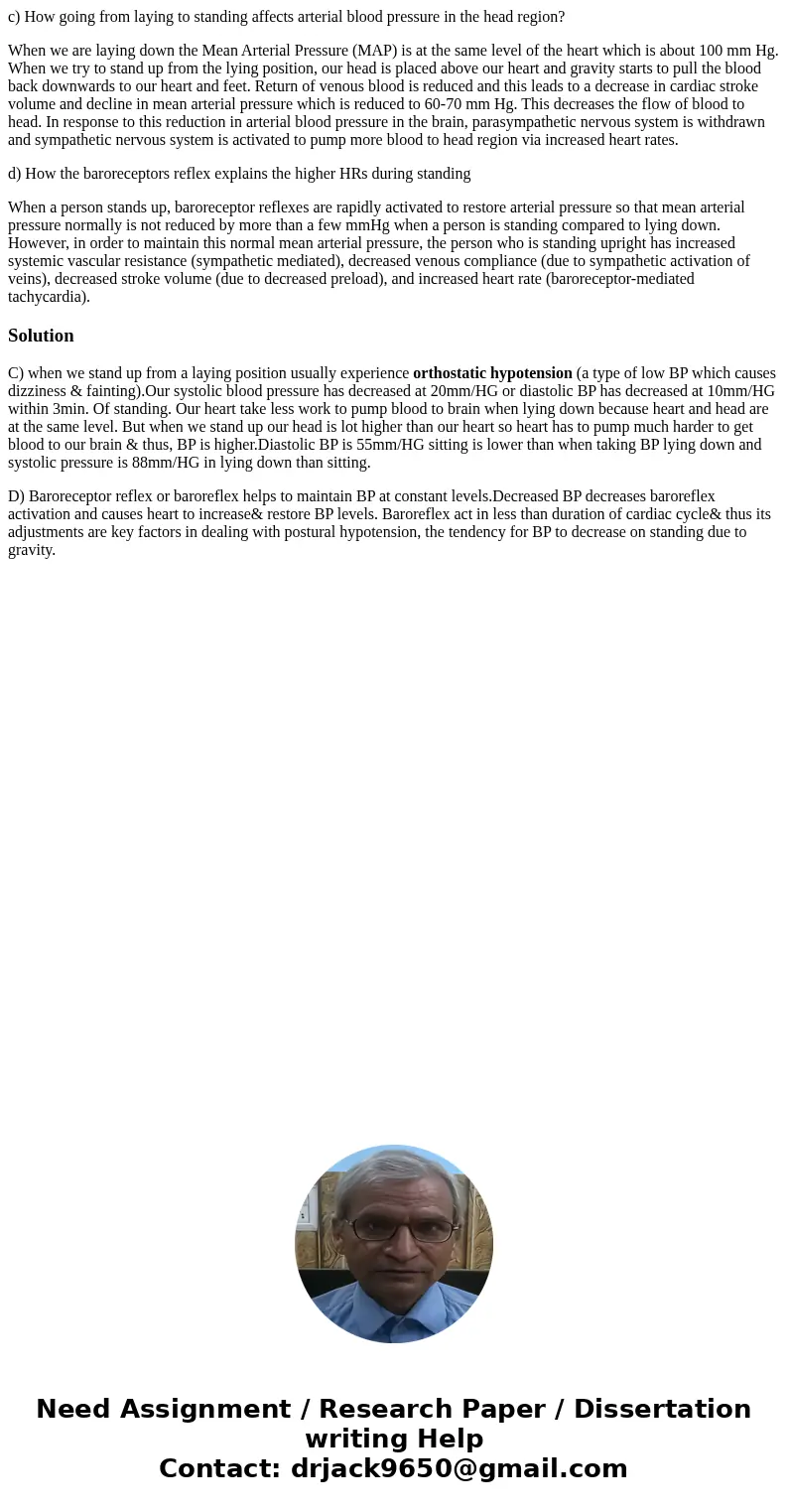c How going from laying to standing affects arterial blood p
c) How going from laying to standing affects arterial blood pressure in the head region?
When we are laying down the Mean Arterial Pressure (MAP) is at the same level of the heart which is about 100 mm Hg. When we try to stand up from the lying position, our head is placed above our heart and gravity starts to pull the blood back downwards to our heart and feet. Return of venous blood is reduced and this leads to a decrease in cardiac stroke volume and decline in mean arterial pressure which is reduced to 60-70 mm Hg. This decreases the flow of blood to head. In response to this reduction in arterial blood pressure in the brain, parasympathetic nervous system is withdrawn and sympathetic nervous system is activated to pump more blood to head region via increased heart rates.
d) How the baroreceptors reflex explains the higher HRs during standing
When a person stands up, baroreceptor reflexes are rapidly activated to restore arterial pressure so that mean arterial pressure normally is not reduced by more than a few mmHg when a person is standing compared to lying down. However, in order to maintain this normal mean arterial pressure, the person who is standing upright has increased systemic vascular resistance (sympathetic mediated), decreased venous compliance (due to sympathetic activation of veins), decreased stroke volume (due to decreased preload), and increased heart rate (baroreceptor-mediated tachycardia).
Solution
C) when we stand up from a laying position usually experience orthostatic hypotension (a type of low BP which causes dizziness & fainting).Our systolic blood pressure has decreased at 20mm/HG or diastolic BP has decreased at 10mm/HG within 3min. Of standing. Our heart take less work to pump blood to brain when lying down because heart and head are at the same level. But when we stand up our head is lot higher than our heart so heart has to pump much harder to get blood to our brain & thus, BP is higher.Diastolic BP is 55mm/HG sitting is lower than when taking BP lying down and systolic pressure is 88mm/HG in lying down than sitting.
D) Baroreceptor reflex or baroreflex helps to maintain BP at constant levels.Decreased BP decreases baroreflex activation and causes heart to increase& restore BP levels. Baroreflex act in less than duration of cardiac cycle& thus its adjustments are key factors in dealing with postural hypotension, the tendency for BP to decrease on standing due to gravity.

 Homework Sourse
Homework Sourse